

|
Cultural Information
Transport in Moscow.Moscow is the city with a well-developed transportation system. In addition to the metro there are buses, trolleybuses, trams, taxis and fixed-route taxis in Moscow. Public transport tickets are not expensive. You can get them at the special kiosks called 'Mosgortrans'. You can often find these kiosks next to the bus stops. It is possible to buy a ticket only for one trip or you can pay for several trips. A single trip ticket costs approx. 30 roubles.  If you could not find such a kiosk, you can buy the ticket right from the bus driver - but in this case the ticket will cost you more. Use the front door to get on a bus, a tram or a trolley. There is a turnstile by the door where you should insert your ticket and then move on into the bus.  Along with the state urban public transportation there is a system of private transportation - taxis and fixed-route taxis that are called "marshroutka". In fact the marshroutkas substitute buses and trolleybuses. They are small vans travelling along a fixed route that matches the routes of the public transport. The marshroutkas supplement public transport on the most complicated and busy routes. They are small and this offers a lot of advantages in the big city - flexibility, fast service and sometimes they are even cheaper. You do not have to buy a marshroutka ticket in advance. You get on and pay straight to the driver. You might not even get a ticket because in a van with only 10 passengers it is easy for the driver to notice who paid and who didn't.  Taxi is rather expensive in Moscow. Minimum price is 350 roubles for 30 minutes. There are not too many cabs in the streets so it is better to reserve the cab either by phone or on-line. There are a lot of companies in Moscow that provide all kinds of taxi services. For example, "taxi-sms.ru". You can try to reserve a cab on your own. You should google just two words - Москва, такси. Taxi is still an expensive way of transportation for most Russians. That is why a lot of people prefer to use so-called "chastniki". "Chastnik" - is a private car used is a taxi. The drivers of such cars work in their spare time. So they virtually work as taxi drivers. To flag down a "chastnik" you just step out into the road and lift your hand. Several cars will immediately stop in front of you offering the trip. 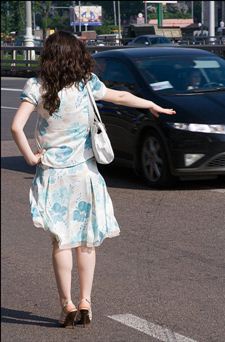 You tell your destination and the driver suggests the price. If the price suits you - the deal is sealed. But be aware that you stop the car at your own risk: you know nothing about the car's condition and the intentions of the driver. We very much recommend you not to do it alone without Russian friends and not to use such cars late in the evening or at night. If you want to drive a car in Moscow on your own, please, address the car rentals. It is easier to find them on-line. Here are a few rentals: "alfacar.ru", "moscowprokat.ru", "5052579.ru". However, there are some rules and restrictions. For example, the driver must be no younger than 25 years old and must have a driving license valid in Russia. If you don't want to drive a car, ride a bus or a metro, you can rent a bicycle! Unfortunately, the bicycle as not a very popular mode of transportation in the Russian cities. First of all it is due to our climate: it is mostly cold and damp throughout the year. You must admit that it is not very nice to cycle in bad weather, and absolutely impossible in the winter. Moreover there are neither bicycle lanes nor even a designated part of the road where you can cycle. That is why it is simply dangerous to cycle in Moscow. The change in traffic pace has changed dramatically in the last few years, the roads have become extremely busy and still there is no culture of safe driving. In Russia, especially in Moscow a lot of people drive too quickly and carelessly. So you should be very attentive in the street! Cultural Life of Moscow (museums, theatres, exhibitions).Moscow is a city with an intense and versatile cultural life. We are going to tell you in short about the most interesting, popular and important locations in Moscow. Being an old city Moscow has a lot of historical places of interest. The main one is, of course, the Kremlin - a huge fortress built at the end of the 15th century. The Kremlin is located right in the downtown. Up to the 18th century it was the residence of the Russian tsars.That is why a lot of relics of the past are well preserved in its territory: the cathedrals, the palaces, the belfry of Ivan the Great. 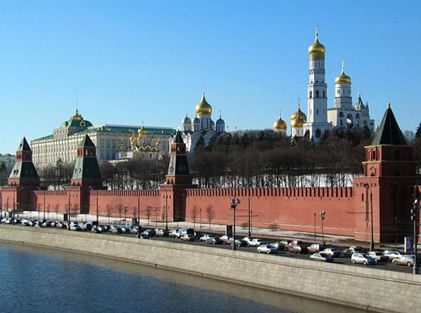 The Red Square is located by the Kremlin. It is the main square of the city. The Red Square is home to Saint Basil's Cathedral (16th century), the Lenin's Tomb (20the century), the State Historical Museum (the end of the 19th century) and some other interesting monuments. 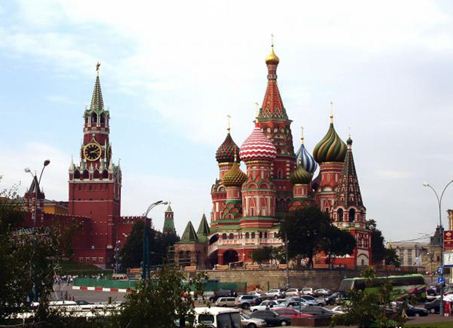 Our country was christianized at the end of the 10th century and a lot of religious monuments remind us of this event: there are numerous cathedrals, churches, monasteries and convents. One of the best-known cloisters in Moscow is the Novodevichy Convent (16th-17th century). The convent is famous not only for its rich history and beautiful architecture (it represents an excellent piece of barocco architecture) but also for its cemetery. The cemetery holds the tombs of outstanding Russians: authors, actors, political leaders. 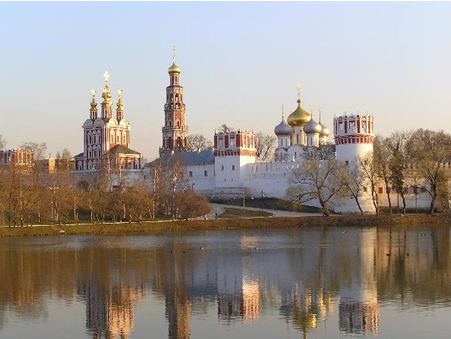 First place amongst the arts galleries in Russia’s capital must go to the Tretyakov Gallery - a collection of works of Russian art. The old historical building of the Tretyakov Gallery (in Lavrinskiy Pereulok) holds a collection of Russian art dating from the ancient times to the October Revolution of 1917. The new Tretyakov Gallery building is situated elsewhere (Ulitsa Krimskiy Val), this is where one can see Russian and Soviet Art of the twentieth century. 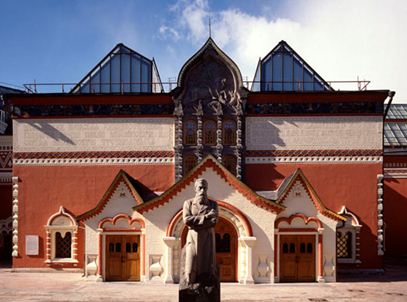
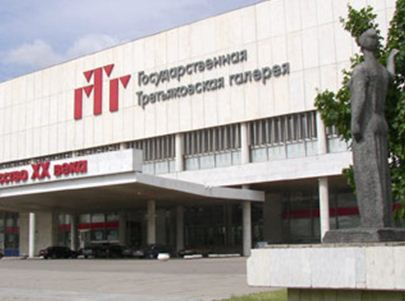 An interesting collection of art from Western Europe is to be found at the Pushkin Fine Arts Museum. Its branch - the Мuseum of Private Collections – holds one of the most complete and beautiful collections of impressionism and post-impressionism. You may get acquainted with the modern art at the Museum of Modern Art (ul. Petrovka, 25) and at several small private galleries in Moscow, the most popular of which are located at the Vinzavod Centre of Modern Arts.  In addition to the art galleries, the Russian capital is also the home to many museums devoted to the famous Russian scientists, writers and artists. There are so many museums that it is impossible to list them all – check the website http://www.museys.ru There are many places in Moscow where you can listen to both classical and modern music. To listen to classical music, go to the Мoscow Conservatory (ul. Bolshaya Nikitskaya). The Moscow Conservatory has excellent acoustics and many famous musicians, including Tchaikovsky, Rachmaninov, Prokofiev, Shostakovich, Rostropovich have performed there. 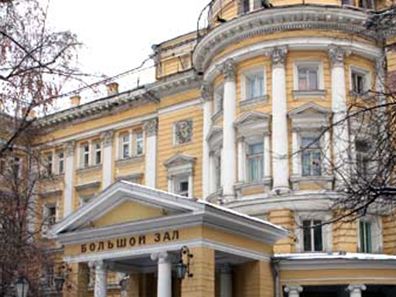 Another, modern building, called the House of Music, was built recently. This venue features several concert halls where not only classical but all types of music is preformed, including jazz, folk, world music and also rock & pop. 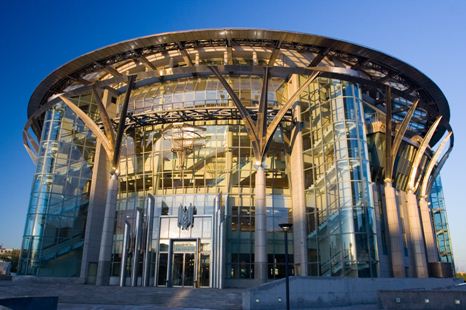 The theatrical age of Moscow is rather modest. The first theatre was established only in the middle of the 17th century. However, nowadays there are about 100 different theatres and drama schools. The best-known is the Bolshoi Theatre, which holds performances of ballet and opera. The main building of the Bolshoi is closed for restoration, but next to it the New Stage was erected where the Bolshoi performances are given until the main stage is finished. 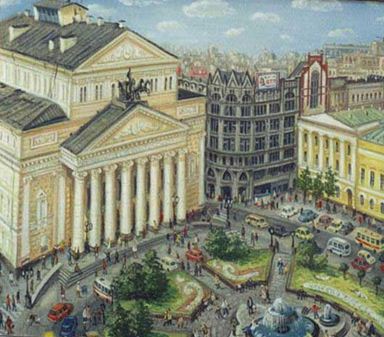 Another popular location for moscovites is the Moscow Musical Theatre named after Stanislavski and Nemirovich-Danchenko. Ballets and operas staged at this theatre are always modern and fascinating. We also must name the oldest Russian drama theatre - the Malyi theatre (in the Teatralnaya ploshad, next to the Bolshoi Theatre). This theatre’s repertoire mainly consists of Russian classics. In the end of the 19th century a famous Moscow Art Theatre was founded by the outstanding Russian producers Constantin Stanislavski and Vladimir Nemirovich-Danchenko. The theatre quickly became famous when it staged Anton Chekhov's major works. That is why the theatre is named after Chekhov. Another popular locations in Moscow are the Taganka Theatre, the Moscow State Theatre named after Lenin's Komsomol (Lenkom), the Satirikon Theatre of Arkadii Raikin, the Moscow Sovremmenik Theatre, Mayakovsky Theatre, the Meyerhold Centre and a number of other venuues. To learn more about Moscow sights visit "moscow-hotels-russia.com" |
|||||||||||||||


|
© 2007-2012 Center For International Education |








|
||












